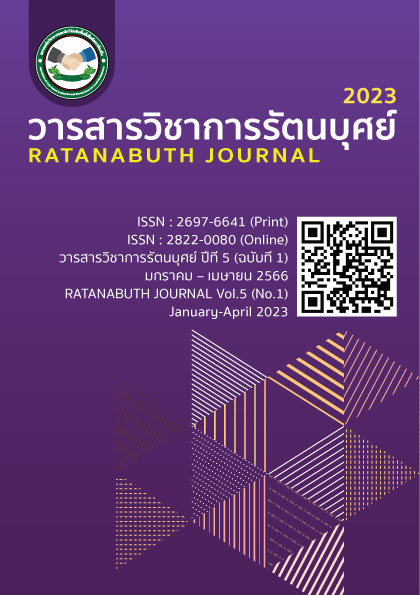Corporate Social Responsibility Through social media on Tourism Industry
Main Article Content
Abstract
Corporate social responsibility (CSR) on social media in the tourism industry is used to communicate with the stakeholders in the society. This research studies consumer demographic, consumer behavior, consumer awareness, and consumer attitude toward CSR social media. Research Methodology Quantitative research is used to collect data in this research paper. the authors use a Convenience sampling to conduct the data. The Convenience sampling is suitable for this Covid situation. Moreover, we tend to find out which CSR channels, such as television, billboard, social media, online newspaper, and radio, that are the most effective on consumer behavior, awareness, and attitude toward the CSR activities. The authors chose to survey around TST Tower, Chatuchak, Bangkok. The result shows that different channels will have different impacts on consumers behavior, awareness and attitude towards CSR activities. Social media can influence people to perceive more knowledge and create a willingness to be involved in CSR activities. Companies can use this research as a guideline to choose advertising channels to get directly into target consumers. It helps to boost the company itself as well as to improve sales.
Article Details

This work is licensed under a Creative Commons Attribution-NonCommercial-NoDerivatives 4.0 International License.
References
Dawkins, J. (2004). Corporate responsibility: The communication challenge. Journal of Communication Management, 9, 108-1 19.
European Commission. (2011). A renewed EU strategy 2011-14 for Corporate Social Responsibility. COM (2011) 681 final, 25.10.2011. EC: Brussels.
Fournier, S. (1998). Consumers and their brands: developing relationship theory in consumer research. Journal of Consumer Research, 24(4), 343-373.
Jahng, J., Jain, H. & Ramamurthy, K. (2007). Effects of interaction richness on consumer attitudes and behavioral intentions in e-commerce: Some experimental results. European Journal of Information System, 16(3), 254-269.
Kati Tusinsky & kim Bartel sheeham.(2014). Ethical practice of social media in public relation. Journal of The current state of practice.
Kent, M. L., & Taylor, M. (2016). From Homo Economicus to Homo dialogic us: rethinking social media use in CSR communication? Public Relations Review, 42(1),60–67.
K.M. Hearit. Mistakes were made: organizations, apologia, and crises of social legitimacy. Communication Studies, 46 (1–2) (1995), pp. 1-17
Mohr, L. A., Webb, D. J., & Harris, K. E. (2001). Do consumers expect companies to be socially responsible? The impact of corporate social responsibility on buying behavior. Journal of Consumer Affairs, 35(1), 45-72.
Parmelee, J. H., & Bichard, S. L. (2012). Politics and the Twitter revolution. Lanham, MD: Lexington.
Simon, S. J., & Peppas, S. C. (2004). An examination of media richness theory in product website design: an empirical study. Info, 6(4), 270-281.
Simon, S. J., & Reynolds, N. (2005). Flow and attitude towards the website on the evaluation of products present by means of virtual reality: A conceptual model. Advances in Consumer Research, 36, 916-918.
Stratton, S. J. (2021). Population Research: Convenience Sampling Strategies. Prehospital and Disaster Medicine, 36(4), 373–374. https://doi.org/10.1017/s1049023x21000649.
Sparks, B. A., & Bradley, G. L. (2018). A “Triple A” typology of responding to negative consumer-generated online reviews. Journal of Hospitality and Tourism Research, 41(6), 719-745.
Suciu, P. (2020, January 13). Social Media Is Improving Their Lives, Say Baby Boomers. Forbes. Retrieved from https://www.forbes.com/sites/petersuciu/2020/01/13/social-media-is-improving-their-lives-say-baby-boomers/#386842622ee1.


